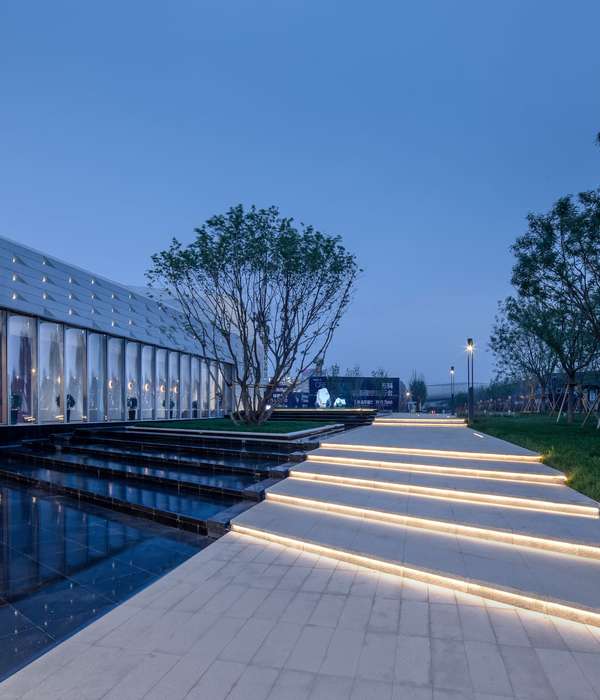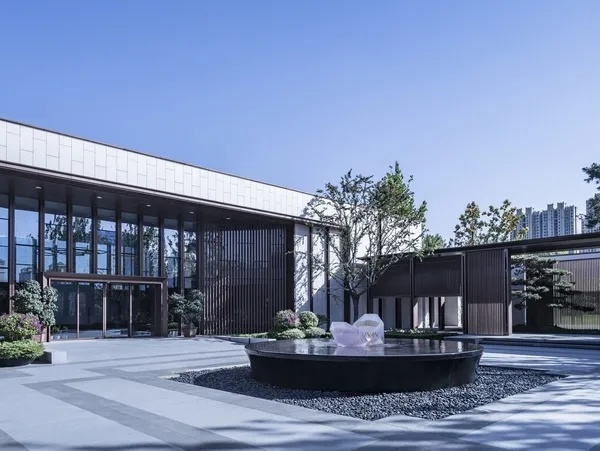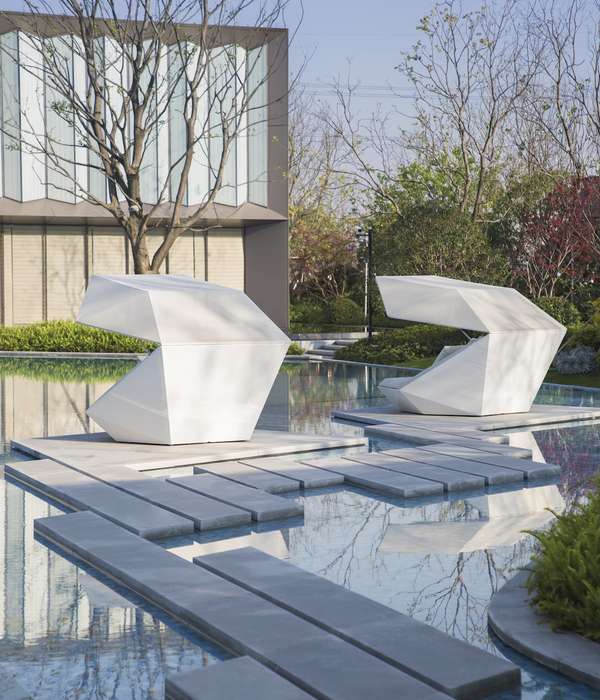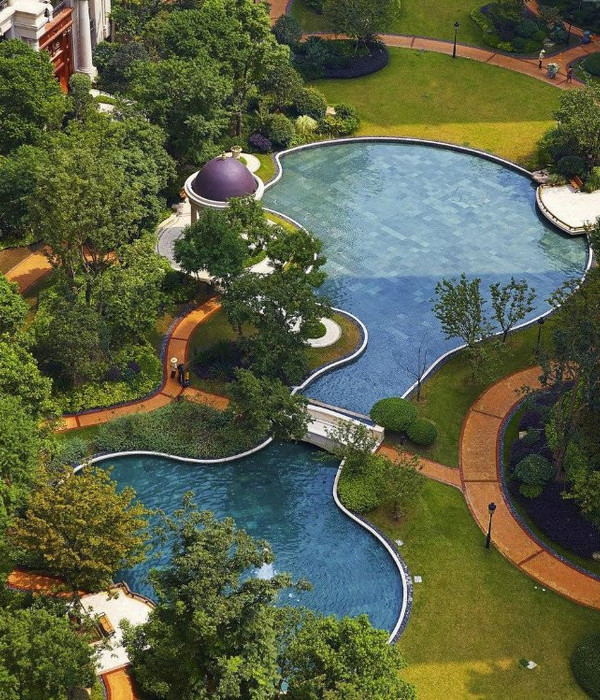“很少有地区存在像约旦河西岸地区那样的领土争议,而这种对土地所有权的争夺往往忽略了土地本身的现实状况。本次研究调查了一系列存在于地域中的问题——包括人口分布、生态、遗产和农业等等——提出了一项未来的和平协议,并将人类的定居行为和自然的“再野生化”视为实现这一结果的关键因素。而从更广阔的范围来看,撤离定居点的能力将为因洪水风险而面临迁移的城市提供可借鉴的经验。” – 2020 年评审委员会
"Few lands remain as contested as the West Bank between Israel and Palestine, but fights over ownership often neglect realities of the land itself. Investigating a series of overlays—distribution, ecology, heritage, and agriculture, to name a few—this study posits a future peace agreement, and suggests a human retreat and natural re-wilding as perhaps the key to attaining such an outcome. Looking more globally, the ability to de-settle land will hold lessons for flood-prone cities that face the prospect of retreat." – 2020 Awards Jury
这项应用研究是在非政府组织“Peace Now”的委托下进行,并将持续地递交给重要政治家、外交官、新闻媒体和智囊团。它以约旦河西岸、巴以冲突地区的开放空间规划为研究对象,研究内容包括区域景观、农业、自然保护区,以及宗教和遗产景观,同时就未来的和平协议提出解决方案:1. 实现巴勒斯坦的公平和可持续发展。2. 使这些开放空间成为以色列定居点和空间宗教遗产的一部分。3. 寻求巴勒斯坦和以色列之间土地交换的可能性。
该研究提出了一种区域景观的规划方法,旨在解决像约旦河西岸这样的复杂城乡区域的总体规划问题。这项工作扩大了景观设计师的实践领域,同时也提出了更多责任。景观成为了定居行为的中心。在今天,彻底的、扩张性的全球迁移是造成政治不公、经济不平等和环境危机等一系列状况的主要原因。因此,“被遗留的景观”也应当像建设景观时那样,得到同等的重视和规划。
The applied research was commissioned by the ngo “Peace Now”, and is continually presented to key politicians, diplomats, press members, and think-tanks. It examines the open spaces planning aspects of the Palestinian-Israeli conflict in the West Bank – territorial landscape, agriculture, nature reserves, religious and heritage landscapes – and suggests their solutions for a future peace agreement, in: 1. the equitable, sustainable growth of Palestine. 2. as part of Israeli settlement and spatial religious heritage. 3. the possibilities for land swaps between Palestine and Israel.
The research delineates a methodology of regional landscape, which is integral to complex urban-rural areas such as the West Bank, and is relevant to their planning in general – a critical issue today. The work broadens the scope and responsibility for landscape architects. Landscape is central to the act of settlement. Now, the complete, expansive settlement of the earth is a major cause for conditions of political injustice, economic inequality, and environmental crisis. Therefore “leaving the landscape” should be planned just as much as building it.
景观问题是当下全球挑战中的一个核心——主要体现在政治与经济的不平等上,同时与环境危机有着密不可分的关系。景观设计师必须要基于足够明智和具有普适性的政治经济原则来解决这些问题。“协议景观”项目正为此提出了一种工作方法,旨在研究约旦河西岸、巴以冲突地区的总体规划问题。自 2015 年启动以来,这个仍在进行的项目愈发展现出了其重要的作用,尤其是在白宫拟定和平计划、以色列前总理内塔尼亚胡提出吞并约旦河谷,以及自由派就“一国方案”进行多次会谈之后。我们相信,只有在经过双方协议的土地分割的基础上,才有可能实现真正的公平。
约旦河西岸的冲突主要落在约旦河谷与沿海平原之间的“山地”上。这是一场神话与土地的冲突,或者说,是景观的冲突。“协议景观”是一项基于历史的研究,它分析了人口在山区和平原景观之间的迁移和定居行为,以及明显受农业用地影响的领土扩张——“犁沟的界线将决定领土的界线”。在研究过程中,我们对两国人口的现有分布和密度进行了持续的跟踪和绘制,并分析他们如何受到历史和现今边界政策的影响。
一个具有明确主权的、可持续的开放空间是巴勒斯坦民族自决权的必要条件和体现。从国家层面上,我们研究了巴勒斯坦的区域景观与公平发展之间的联系;而从地方层面上,则研究了由城镇、郊区、乡村、开放空间和基础设施构成的“乡村城市化”和“综合城市化”现象。
景观的特征将最终决定社会的特征——连贯性和可亲近性、大小和宽度、分布方式和多样性,以及遗产、农业和生态的构成等等——都将对社会和经济关系、教育和就业机会产生影响,并将反过来继续影响文化和社区。巴勒斯坦的生存和长期发展需要明确的主权和广泛而连续的领土,而区域景观正是这之中不可缺少的一部分。任何边界政策的制定都应当考虑到这一点。
从历史上看,以色列拟定的边界致使被吞并的犹太人定居点与其周围环境相隔绝。生活在“沉睡”的郊区中的居民被困在围墙之内,甚至不能在周围景观中简单地散步。从这个意义上说,这些定居点其实可以存在于以色列原有边界内的任何区域。
相反,为了巩固广泛的地缘政治上的连贯性,使巴勒斯坦(而不是以色列)一直保持“岛屿”般的分散状态,以色列实施了“由景观界定定居点”的方案,并且强调景观的宗教、精神和遗产价值。以色列于 20 世纪在平原上实施的犹太复国主义农业是一场绿色革命,造就了以色列引以为傲的大规模、工业化的农业景观;约旦河谷亦借此形成了长期的、意识形态温和的、密集型的农场。然而,山区定居点的农业在当下所强调的是地域、传统和宗教特征,例如 Gva’ot Olam——约旦河西岸意识形态最为极端的区域之一,亦是以色列规模最大的有机鸡蛋农场的所在地。它的大部分产品被售卖给特拉维夫的左倾自由派人士,这并非一种巧合。自由派主张的“回归故土”与极右派的相同态度错综复杂地交织在一起。
以色列的大部分宗教和遗产景观都分布在山脊沿线,与要被吞并的领土相距甚远。我们的建议是,以色列不应吞并那些几乎没有遗产价值的定居点,而是应当采取一些安置策略,使犹太人能够真正亲近和使用他们所喜爱的土地和景观,这类似于其他宗教与以色列在其 1949 年边界内的安置方式。
通过分析景观对于巴以之间“土地交换”的可能性的影响,这一分析研究得到了进一步完善。三项研究在汇总后形成了可能达成协议的领土方案。我们得以看到景观研究和景观规划将如何影响地缘政治的可能性与社区特征,例如以色列需要撤离的定居者数量。
该研究结合了特殊的跨学科数据,且其中一部分是首次提供和公开的,并且具有高度的精确性。此外,我们还为该项目专门整理了重要的数据层级,例如,对所有巴勒斯坦人的聚居地进行了重新测绘。鉴于该地区具有城乡结合的特征,这项工作涉及到对聚居区和具体区域功能的重新定义。从城市中心到小农场,再到贝多因人(Bedouin)的帐篷营地,人口的密度逐步变化,这就需要对建设区的不规则边界和连贯性作出界定。这是一项非常有争议的工作,因为冲突双方都希望尽可能地获得连续的空间和领地。考虑到该地区的不断变化,我们借助高清晰度的航拍图分析和定期的实地考察来完成研究和数据收集。此外还有许多工作是在公共规划许可和出版物政策的严格监管下进行的。我们自己收集到的数据已不止一次地揭示出政府部门或非政府组织原先所不知道的“新发现”。
我们为该项目
地缘政治景观 – 历史背景 – 由景观界定定居点。地中海和约旦河之间的土地被划分为西部沿海平原和东部山岭。其边界在历史上是由农业和宗教景观而得以确定。Geopolitical landscape – historical background – settlement by landscape.The land between the Mediterranean and the Jordan river is divided between the western coastal plain and the eastern mountain ridge. Its borders were historically delineated by agricultural and religious landscape.©shelter_expanse,Carta Atlas
▲1.2. 两种人口分布和密度图。大部分以色列人口集中在几个大的城镇,主要分布在西岸的“条状”地带,与中部和东部的众多小范围定居点形成了对比。
The two populations – distribution and density mapping.
Most Israeli population is concentrated in a few large towns, mostly on the western“strip”of the West Bank, in contrast with many small settlements in the central and eastern parts.
©shelter_expanse
协议提出的人口和历史边界。此项工作的目的是为两种人口的土地划分提出可能的解决方案,图中标明了之前的一些建议。工作还将包括以色列人定居点的撤离。
©shelter_expanse
景观指导巴勒斯坦的长期发展。稳定的和平需要长期、平衡和分散式的增长。基于既有的城乡景观、农业和聚居地现状,项目团队为巴勒斯坦提出了多中心发展的构想。这种发展方式比集中的大都市模式更具有可持续性和公平性。©shelter_expanse
▲2.2. 巴勒斯坦的开放空间和发展状况 – 与之前提议的边界作对比。以色列和美国在之前和现今拟议的边界给公平的空间增长带来了阻碍。图中展示了其与塔巴(2001)、日内瓦(2003)和安纳波利斯(2007)的提议的对比。Palestinian open spaces and development – with previously proposed borders. Previous and currently proposed borders by Israel and the United States obstruct the possiblity for equitable spatial growth. They constrast with Palestinian proposals in Taba (2001), Geneva (2003), and Annapolis (2007).©shelter_expanse
▲2.3. 巴勒斯坦的开放空间和发展状况 – 本地案例:Salfit。例如,Salfit 应当作为一个区域中心来发展。由于 Wadi A-Sha’ri 的坡度超过 20% 且具有很高的生态价值,Salfit 只能向北发展,但以色列的吞并方案对其形成了阻碍。Palestinian open spaces and development – local example: Salfit. For example, the Palestinian town Salfit should develop as a regional centre. It can only develop northward, due to Wadi A-Sha’ri – with slopes above 20% and high ecological value. But Israeli proposals for annexation obstruct this development.©shelter_expanse
▲2.4. 巴勒斯坦的开放空间是区域城市化的重要组成部分。案例:Beit Ummar。开放空间同样是综合城市化过程的一部分。Beit Ummar 和 Beit Fajjar 之间的农业区是两座城市的主要开放空间。按照以色列向南扩张的提议,Gush Etzion 吞并区域将分割这一城乡地带。Palestinian open spaces integral to regional urbanism – example: Beit Ummar. Open spaces are also required as part of an integrative urbanism. For example, agricultural areas between Beit Ummar and Beit Fajjar are the cities’main open spaces. Israeli southward expansion of the proposed Gush Etzion annexation splits this rural-urban entity.©shelter_expanse
▲2.5. 巴勒斯坦农业景观和农民人口分布图。乡村城市化 – 开放空间作为村庄占地面积的一部分 – 巴勒斯坦农民人口的分布图反映了景观和人民之间的具体关系。它应当成为未来任何空间解决方案的基础。Mapping of Palestinian agricultural landscape and farmer population.Rural urbanism – open space as part of the footprint of the village – A mapping of Palestinian farmer population shows the specific relationship between the landscape and its people. It should be the base for any future spatial solution.©shelter_expanse
巴勒斯坦农业景观 – 案例:Wadi Qana。由 Deir Istiya 耕种的 Wadi Qana 区域被以色列人的定居点占据,并在以色列和美国的提案中被指定为吞并点。©shelter_expanse
▲3. 由景观划定定居点 – 案例:Wadi Qana | 3.1.自然保护区申报 | 3.2.宗教景观。以色列申报的自然保护区以及宗教和遗产景观阻碍了巴勒斯坦的建设和农业发展。与上张图所示的 Wadi Qana 的状况相同。Settlement by landscape – example : Wadi Qana | 3.1. nature reserves acts of declaration | 3.2. landscape of religion. Israeli declared nature reserves and religious and heritage landscapes obstruct Palestinian development and agriculture. As in the same Wadi Qana shown in the previous slide.©shelter_expanse, Activestills
▲3.4. 泉水 – 从功能到精神 | 3.4. 农业 – “回归土壤”。以色列对天然泉水的控制,是用和宗教与精神相关的休闲功能去取代其作为巴勒斯坦农业水源的硬性功能。以色列的农业同样是也是向精致、宗教、有机和“地域性”发展的体现。springs – from functional to spiritual | 3.4. agriculture – “back to the soil”. Israeli control of natural springs replaces their required critical function as an historic and present water source for Palestinian agriculture, with spiritual, religious leisure. Israeli agriculture is also part of boutique, religious, organic, “terroir”trends.©shelter_expanse,Moti Milrdo, Alex Libak, Haaretz
景观和意识形态 – 农业、空间宗教和投选。人与土地相生相克 – 以色列意识形态定居点的三个条状地带,各自都拥有独特的农业和宗教性的开放空间。为了解决当下的空间问题,景观设计师必须将工作建立在自身明确的、普适性的政治意识形态之上。
Landscape and ideology – agriculture, spatial religion, and voting. People and land make one another – three strips of Israeli ideological settlement-landscape, each with distinct agriculture and religious open spaces. To address current spatial issues, we, landscape architects, must base our work on our own clear universal political ideology.©shelter_expanse
▲4.1. 土地交换的景观 – 以色列边界对农业景观的影响。土地划分要求巴以双方在 1949 年停战时划定的“绿线”的基础上进行公平的土地交换。目前的吞并方案要求在交换的同时销毁以色列的农业景观——尽管其具有重要的经济和文化特征。The landscape of land swaps – Israeli border effect on agricultural landscapes. The division of the land requires an equitable land swap between Israel and Palestine, based on the 1949 armistice“Green Line”. Current annexation proposals require swaps that demolish Israeli agricultural landscapes – with critical economic and cultural characteristics.©shelter_expanse
▲4.2.土地交换的景观 – 开放空间对潜在边界的影响的局限性。相比之下,加沙和西岸周围的村庄应当对其农业景观进行谨慎的考量——它们是土地交换的计算依据。The landscape of land swaps – limits of open spaces effect on possible border. In contrast, the villages surrounding Gaza and the West Bank should be considered with their agricultural landscape – as a base for land swaps calculations.©shelter_expanse
▲5.1. 协议的景观 – 可能的解决方案 | 5.2. 展示。一个可能的解决方案考虑到了所有被描述的问题——针对巴勒斯坦长期发展和综合城市化的景观设计;以色列宗教景观;以及土地交换的景观。该研究被应用并体现在不同的功能当中。5.1. the landscape of an agreement – a possible solution | 5.2. presentations. A possible solution takes into account all issues described – landscape for long-term Palestinian development and integrative urbanism; Israeli religious landscapes; and landscape for land swaps. The research is applied and presented in various functions. ©shelter_expanse
Landscape is at the heart of our current global challenges – mainly political and economic inequalities, inextricably coupled with the environmental crisis. Landscape architects must address these issues with clear, universal political-economic principles. “Landscape of an Agreement” presents such an approach, as part of a larger research work on the planning aspects of the Palestinian-Israeli conflict in the West Bank. With every year since its commencement in 2015, the on-going project becomes more and more relevant – and now with the White House recent peace plan, Mr. Netanyahu proposal for annexation of the Jordan Valley; and on the liberal side, talks of a one-state solution. We believe that a just peace is only possible with an agreed division of the land.
The conflict over the West Bank is a conflict for the mountain, between the Jordan valley and the coastal plain. It is a conflict for myth and land – landscape. The research is based on an historical study, analysing the movement and settlement of populations between the landscapes of the mountain and the plain, and the territorial expansion based distinctly on agricultural open spaces – “The line of the furrow will determine the line of the border”. We are also constantly mapping the present distribution and densities of the two populations, and study how they are affected by historical and current border proposals.
A clear sovereign, sustainable, open space is a requisite and an expression of the Palestinians’ right to national self-determination. We study the relationships between Palestinian regional landscape and equitable development on a national level, and on a local level of “rural urbanism” and “integrative urbanism” comprising towns, suburbs, villages, open spaces and infrastructure.
The characteristics of the landscape ultimately determine the characteristics of the society – continuity and proximity, size and width, distribution and variety, components of heritage, agriculture, ecology – all affect social and economic relations, access to education, employment and other spatial opportunities, which in turn affect culture, community, and so on. The regional landscape is an integral part of the sovereign, broad, continuous territories required for a long-term growth of a viable Palestinian state. Any border proposals should take this into consideration.
Historically, the borders proposed by Israel leave annexed Jewish settlements isolated from their surroundings. Living in sleeping-suburbs, residents would be enclosed within a wall, and unable to simply take a walk out in the surrounding landscape. The settlements could therefore exist anywhere within the original borders of Israel.
In contrast, with an aim to consolidate wide geopolitical continuities, keeping Palestinian localities, rather than Israeli, as the “islands”, Israel implements a settlement by landscape. It emphasises religious, spiritual, heritage values. The Israeli 20th century Zionist agriculture of the plain was that of the Green Revolution – large-scale, industrial agricultural landscape in which Israel was always at the forefront. This is also true also to the secular, ideologically moderate, intensive farms in the Jordan valley. However, the recent agriculture of the mountain settlements emphasises “terroir”, traditional, religious characteristics. For example – Gva’ot Olam – one of the most extremist outposts in the West Bank – is also the largest organic egg farm in Israel. It sells most of its produce to left-leaning liberals in Tel Aviv. This is not a coincidence. The liberal “back to the soil” is intertwined with the same attitude in the far right.
Most of Israel’s religious and heritage landscape is located along the mountain ridge, away from the territories for annexation. We suggest that instead of annexing settlements with almost no heritage value, Israel should propose arrangements that preserve access to sites and landscapes that the Jewish people have an actual affinity with – similar to arrangements other religions have with Israel within its 1949 borders.
This analysis is complemented by effects of landscape on the possibilities for “land swaps” between Palestine and Israel. The three studies then converge to form territorial scenarios for a possible agreement. We thus see how a research and planning of landscape directly affects geopolitical possibilities, and the character of communities, such as the number of settler population Israel will need to evacuate.
The research combines unique inter-disciplinary data, some of it made publicly accessible for the first time, especially at this level of detail. In addition, important layers of data have been assembled specifically for this project. For example, all Palestinian localities were re-mapped. It involved a tailor-made re-definition of aggregation and delineation functions of buildup areas, due the integrative rural-urban characteristics of the region. The gradual change of density from city-centre to small farms and Bedouin camps, required decisions on the delineation of edges and continuities of buildup polygons. This is extremely controversial because each side of the conflict wishes to
▼项目更多图片
{{item.text_origin}}












